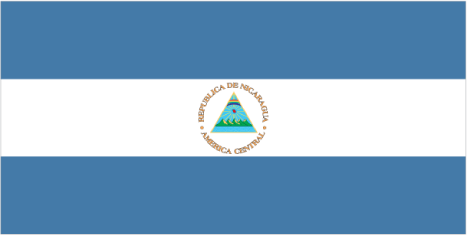To help inspire or plan your trip to Nicaragua, some of its major attractions
for travellers are shown below, including some of the best natural, historical, cultural and adventure sites in the country.
These include all of UNESCO World Heritage Sites for Nicaragua which represent the best
of the world's cultural and natural heritage.
Click on the icons below to focus on specific types of features
(click again to return to all).
|
|
|
|
|
|
|
|
|
|
|
|
 |
|---|---|---|---|---|---|---|---|---|---|---|---|
| Natural | History | Wildlife | Trekking | Cities | Religious Monument | Boat Journey | Rail Journey | Diving | Cultural | Adrenaline | UNESCO WHS |
Natural attractions in Nicaragua
| Granada | |
|---|---|
Granada is Nicaragua's oldest and most atmospheric and charming colonial city. Founded in 1524, the city is located on the north-west shore of Lake Nicaragua at the foot of Mombacho volcano. Its historic centre is a compact area centred around the main plaza and the lakefront characterised by colonial and neoclassical architecture, tree-lined streets and horse-drawn carriages riding through the town. The nearby market town of Masaya is famous for its handicrafts where you can buy a range of products including baskets, carvings, masks, marimbas, embroidered clothes and tapestries. It's possible to drive almost to the lip of the crater of the nearby Masaya Volcano in the National Park to see the bubbling lava, smoke and sulphur gases as well as the magnificent views of the region's volcanic landscape. | |
| Ometepe Island | |
|---|---|
Ometepe Island on Lake Nicaragua is the world's largest freshwater island comprising two volcanoes connected by an isthmus, Concepcion Volcano, an almost perfect cone shape at 1610 metres and Madera Volcano at 1340 metres. The island is a beautiful natural spot which has much to explore. There are ancient stone statues and petroglyphs made by the Chorotega people on Volcan Madera, which can be hiked for superb views. The forested island is home to many species of birds and other animals such as howler monkey and green parrot which can be spotted on walks. There are also numerous isolated black sand beaches around the volcanoes to relax on and swim from. Other options include horse riding or relaxing in the coldwater springs at Ojos de Agua. | |
| León | |
|---|---|
León was founded in 1525 and was the colonial capital until 1857. The city is considered the intellectual and progressive centre of Nicaragua. The cathedral here is one of the largest in Central America, designed by Guatemalan architect Diego José de Porres Esquivel which reflects a transition from Baroque to Neoclassical architecture. It is characterised by its abundance of natural light and the rich ornamentation of the Sanctuary's vault. Elsewhere the town's Spanish colonial buildings, narrow streets and arched colonnades lend León an elegant and atmospheric air. Close to León, the Cerro Negro volcano can be hiked. UNESCO World Heritage Site: León Cathedral | |
| Corn Islands | |
|---|---|
The Corn Islands on Nicaragua's northern Caribbean coast are an unspoilt and isolated paradise. With an English-speaking Caribbean culture distinct from the rest of the country, the islands offer miles of white sandy beaches, crystal clear waters to explore the coral reef by diving or snorkelling and some excellent seafood amidst a laid back atmosphere. The smaller Little Corn Island, accessible by boat, is even more isolated with no cars and a beautiful palm-fringed beach. | |




